

4 Ways to Maximize Your Reviews
Over the past few years, 5 star reviews have become worth their weight in gold. With sites like Yelp and Tripadvisor growing in popularity, reviews have become even more important to the success and profitability of businesses. Not only that, customers see the importance of reviews when choosing to book an activity or tour. Tripadvisor found that 80% of travelers read at least 6-12 reviews prior to making a booking and 53% won’t even commit to making a booking or reservation until reading at least one review. Stats like these show why not only having but effectively showcasing reviews is crucial to bringing in new customers. See some of the other reasons you should consider highlighting your reviews.
Online Reviews are the New Word of Mouth
While a recommendation from a familiar source like a friend or family is always key, online reviews are becoming almost equally important. As social media usage has skyrocketed and online review sites have become more popular, people are now turning to reviews as a trusted form of social proof. In a recent study from BrightLocal, 79% of people said that they trust reviews just as much as a personal recommendation. This shows that though word of mouth is still a great way to improve your reputation and grow your business, online reviews are becoming just as important.
It’s also worth noting that online reviews will reach more people and help influence a greater number of potential customers than word of mouth. Customers are much more likely to turn to the internet before asking for word of mouth recommendations when inquiring about a business. That’s why you should showcase your reviews on every possible platform. Highlight them on your website with the Reviews Widget and sign up for sites like Tripadvisor, Viator or GetYourGuide to bring in more reviews. A personal recommendation will always be key, but it’s clear online reviews have carved out their importance in the industry and are here to stay.

To Boost Revenue, Aim for Quality and Quantity
Even though 5 star reviews look great from afar, it’s a common misconception that having only perfect reviews generates more revenue. A study conducted by Womply on small businesses discovered that having an average rating of 5 stars doesn’t directly translate to an increase in revenue. Small businesses that fall within the 3.5 to 4.5 star range are in fact the ones that see the most revenue. Even more shocking is that businesses with a 5 star average actually earn less than 1 to 1.5 star businesses.
It’s important to note this difference since it’s expected to have customers that leave lower rated reviews and customers won’t always leave 100% satisfied. The same study also found that the quantity of reviews is the most important factor for many. Businesses with greater than the average number of reviews earned 82% more revenue than those with less than the average review. This shows that though it’s important to get 5 star ratings, it’s even more important to get a review from every customer.
Boost the amount of reviews by ensuring you collect emails from every guest, not just the person booking - Peek’s SmartReviews+ feature collects emails from waiver signatures and sends out an automated request after the activity. Another great way to generate reviews is through asking the customer directly at the end of the activity, placing QR codes and signage up around your office, or incentivizing your guides with rewards.
Address Every Negative Review - They Matter Just as Much as Great Ones
Not every review will be 5 stars and you’re bound to have some reviews from unhappy customers who weren’t satisfied with their experience. In the past, it was common to ignore these reviews as outliers and try to hide them altogether. However, this isn’t the case as most customers actually seek out negative reviews. Let's be honest, we’ve all filtered reviews to look at the worst of the worst experiences. They exist and shouldn’t be ignored. While a 1 star review may seem problematic, customers actually spend five times as long on a site when they interact with negative reviews and see an 85% increase in conversion rate. This is because negative reviews make your business more credible and near perfect ratings can appear suspicious to customers. Use this to your advantage by responding to negative reviews quickly.
Replying to reviews - good or bad - leads to better ratings. Be transparent about your mistakes, offer a solution and even show your concern by providing an incentive such as a discount. If you don’t have time to get to those bad reviews, enlist the help of SmartReviews+ to automatically follow up with low-rated reviews

Covid Has Made Reviews Even More Essential
2020 was a year to forget for the travel industry with many struggling due to the global pandemic. Nevertheless, it’s safe to say that there’s a lot to learn from with the tourism industry adapting to this difficult situation. For one, customers want a greater focus on health and safety precautions taken by a business. 23% of people said they chose a different business if the other didn’t follow health measures, and 17% wrote negative reviews of businesses that didn’t follow the necessary Covid-19 health measures. The Reviews Widget showcases the most up-to-date reviews on your website so potential customers don’t have to search different review sites for comments on safety protocols.
Customers want to feel safe when choosing a business now more than ever and aren’t afraid to speak up when the health and safety of a business are not up to standards. Share your protocols with customers through clearly stating them in the booking flow or on your website. This will let customers know you’re serious about keeping them safe before and after the activity to put them at ease when booking.
If you’re interested in showcasing reviews on your website, reach out to support@peek.com to get the Reviews Widget on your page in only 5 minutes!
.png)
Growvember 2020
Thanks for Registering for Growvember!
Peek gathered some of the industry’s best and brightest to help you supercharge your business this season! These industry experts delivered invaluable workshops centered around driving more revenue for your company.
Big thanks to all of the speakers and to those who joined us live for the discussions. Growvember 2020 is now over, but don’t worry! You can access the recordings of all talks right here.

Chris Torres
Founder & Director, Tourism Marketing Agency

Kelsey Tonner
Founder, Be a Better Guide

Samantha Hardcastle
Founder, The Storied Experience
Tour Operator Roundtable
Natasha Baker Williams, Founder, SUP PUP, John O'Sullivan, Founding Director, Depot Adventures, Eddie Sax, Founder, Chief's Luau, Jen Becker, Director of Marketing, Escape Adventures, John Lynch, VP of Marketing & Operations, Peek Pro

Josh Oakes
Co-founder, The Sunshine Tribe

Supercharge Season
Matt Osterhaus, Product Manager, Peek Pro & Kyle Davidson, Sales Engineer, Peek Pro

Dan Kirner
Founder, Tour Operator CFO

Koa Kauwe
Director of Business Development, Boostability

Andrew Simpson
Head of Tiger Care, Tourism Tiger

Nathan Andrew
Digital Marketing Director, Blend Marketing
See you next year for Growvember 2021!

SheTalks 2021 Recordings
That's a wrap on SheTalks 2021!
Peek gathered some of the industry’s best and brightest to help give valuable insights for your business for the upcoming season and beyond!
Big thanks to all of the speakers and to those who joined us live for the discussions. SheTalks 2021 is now over, but don’t worry! You can access the recordings of all talks right here.

Marica Mackenroth Brewster
CEO & Founder, Von Mack Agency
Mapping Your Own Path to Recovery: Where to Focus Your Marketing Attention Right Now

Nikki Padilla
Tour Guide Educator & Advocate, TripKinetics
Tour Operator Roundtable
Carolina Eiris Molloy, CFO & Co-Founder, Adventure Sports Innovation; Avital Ungar, Owner, Avital Food Tours; Filipa Loulé, CEO & Founder, Portuguese for a Day Tours; Lee Ranking & Tiffany Breindel, Owner & Farm Manager, Apple Hill Farms; Angalina Salls, Manager, Alvin's Offroad Playground; Linda Denbrock, Business Development, Peek Pro
See you next year for SheTalks 2022!
.png)
Google My Business: 10 Key Optimizations for Tour and Activity Operators
What is Google My Business?
Google My Business (GMB) is a free tool from Google to help small businesses manage their online presence and get direct bookings. Your GMB page will appear as on the side of a Google search related to your business, helping to provide more information, reviews and a direct route to booking your activities.

Given the rollercoaster that has been 2020, customers are more likely than ever to check out your business on Google before showing up in person. Take this opportunity to jazz up your GMB page, and give visitors a clear path to booking with you right away.
Why is having a Google My Business account important?
GMB is extremely important for driving online traffic to your business - you’re more likely to come up in a search if you have an optimized GMB page. Google presents its own top three selected businesses at the top of a Google search before the actual search results. Keep reading to find out how to get in that top three.
How can I appear higher up in the listings?
It’s all about optimization. Follow the steps below to help verify your business and increase your chances of appearing higher up in the listings. The more information Google can verify about your business, the higher your business will rank in their listings.
Our amazing partners Namaste in Nature and French Quarter Phantoms have done an excellent job of optimizing their GMB accounts - keep your eye out for some awesome examples throughout this blog!
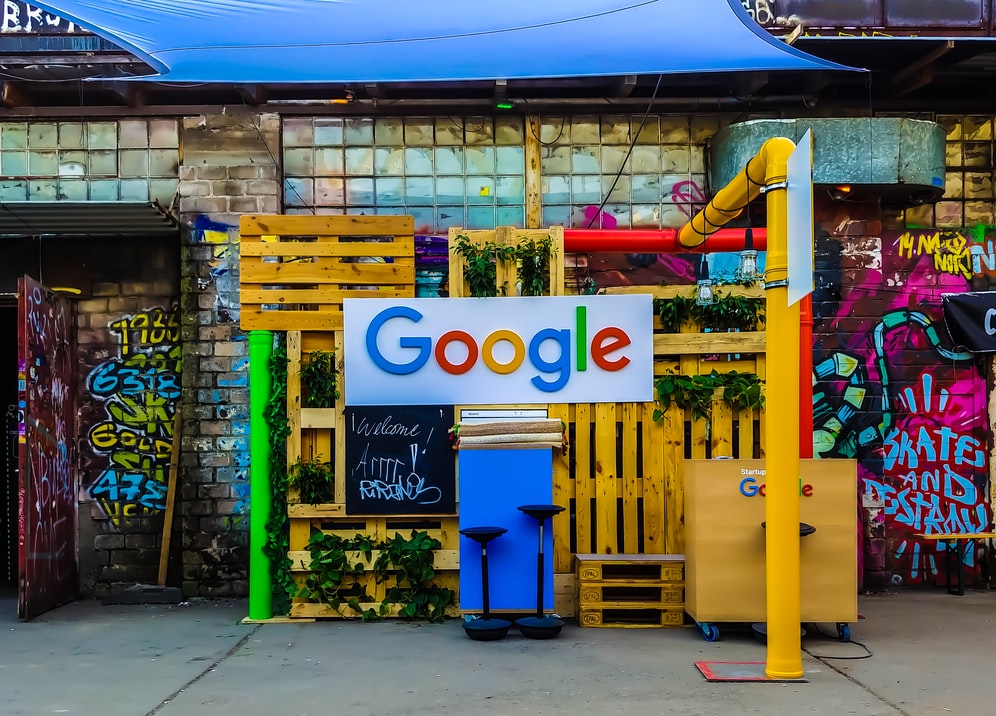
1. Claim your business
If you haven't already, search your business and check whether it appears on Google. Someone else may have uploaded your business to Google maps, but only you can claim the account.
Click on ‘Claim my Business’ - this will trigger Google to send you a postcard in the post to verify that you are the business owner and you have access to the business location.
Once this has been approved, you’ll have full access to your account and can begin to optimize. Find more details on claiming your business here.

2. Ensure consistency with your Name, Address and Phone Number (NAP)
One of the main ways Google verifies your business is through citations - every time your business is mentioned on the internet. This usually consists of your business name, address and phone number, or “NAP”.
Google will find every instance your business is mentioned on the internet and check whether the name, address and phone number attached are exactly the same. Any differences or discrepancies will cause Google to doubt the validity of your business.
What does a consistent NAP look like?
- All components are ALWAYS written in exactly the same format
- This includes any shortenings such as ‘rd’ for ‘road’ or ‘hwy’ for ‘highway’, so make sure to use the full written address
- Make sure the same phone number is included and always include the country code
How can I make sure my NAP is always consistent?
You can do an audit of every citation of your business on the internet, filter out inconsistent cases, and create more credible entries. Here’s how:
- Head to www.moz.om/local/search
- Type in your business name
- It will find all the citations out there and will give you a score
- Go to any incomplete entries and correct them - e.g. Facebook is missing photos, TripAdvisor is missing a missing phone number, Yelp has your address listed in a different format (CA instead of California)
- Clean up your existing citations and look for new citation opportunities
This is the most important information for Google, so make sure it’s available in as many places as possible.
Where should I include my NAP?
- Include your NAP in the footer of every page on your website
- Create a short organic video on youtube of you introducing your business and make the title your NAP
- Embed this video on your website homepage - Google owns YouTube so this is a great way to help verify your business information
- Embed your Google Maps listing on your homepage and label the link ‘Get Directions Here’ - this will show Google that your business is where you say it is
- Link your strongest citations on your homepage, such as Facebook, TripAdvisor and Yelp
If you want to find out more about optimizing your citations, check out this YouTube tutorial.

3. Fill out all of your business information
The more complete your account is, the more likely it will appear higher in Google’s rankings. Google gives you 750 words to describe your business - try to use as many as possible and include all necessary info. The first 250 words will show up first - so make the beginning count.
What should I include in my business description?
- Explain fully what you offer as a business so that it’s super clear for customers
- Provide all the information a customer would need to book with you straight away
- Use key words and phrases that refer to what you offer to further verify your business; e.g. if you are a rafting business, use ‘white water adventure in Pucon’ or ‘gnarliest rivers in Chile’
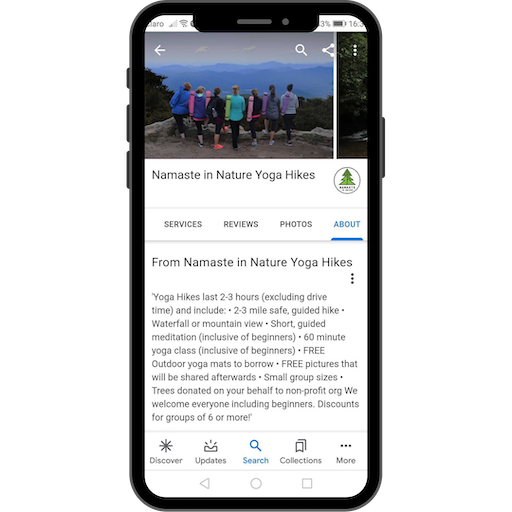
Categories
- Fill out your business category as specifically as possible: This will help you appear in discovery searches and help Google recognize your business
- Make sure to fill out all five of the category options to provide as many opportunities as possible for your company to be found in a relevant search

Business Hours
- Similar to your NAP, the format of your schedule should be the same on your website, on your GMB page and anywhere else that it appears on the internet
- Update these as much as possible, especially for public holidays or any closures that you may have. This helps verify the information on your website and boosts Google’s confidence in your business

Attributes, Products & Services
- Including more specific information about services you provide will help you appear in more relevant searches and boost your ranking. Some examples could be: wheelchair access, bicycles for rent, restroom, Wi-Fi (free / paid)
- Your GMB page looks more appealing if you list attributes and products because small green ticks are added under your business name, which can be subconsciously attractive to customers
- You can use this section to sell your individual products; Google displays your products with an attractive carousel that shows up on mobile devices. Here is a great example from our partner Namaste in Nature:
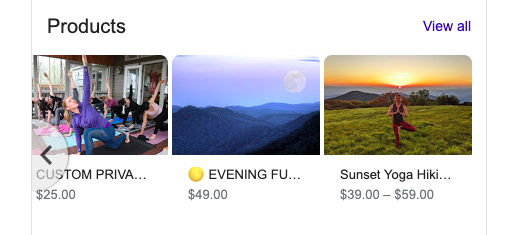

4. Link your Google Things to Do account to get direct bookings
Google Things to Do allows for your activity to appear in front of the millions of people who use Google each day. By allowing this integration, customers will be able to find your activity when searching for a point of interest or attraction. Your tour or activity will show up directly on the Things to Do tab along with your business name and price.

While customers won't be able to book directly through Google, they will be able to compare prices and be directed to your site boosting your revenue through direct bookings and giving you greater visibility on Google.
You can easily integrate your Peek.com account with Googe Things to Do through our Magpie - Google Things to Do. For more info about Google Things to Do and how to integrate your account, check out this Helpdesk article.
If you’re a Peek Pro partner and want to know more about being listed on Peek.com, click here.

5. Geotag your top quality photos
Images are some of the most engaging content out there, and are a super helpful way for customers to get to know your business. Include images of your office, the places you will take customers, and your team to help Google understand what your business offers. Post photos frequently, as this lets Google know your business is open and active.
Make sure to always use original content - Google will know if you are uploading stock photos, and it will cast doubt over whether you are a real business or not.
A great way of helping Google verify the location of your business is to ‘Geotag’ the photos you upload. This means adding a short line of code to the images to state their location.
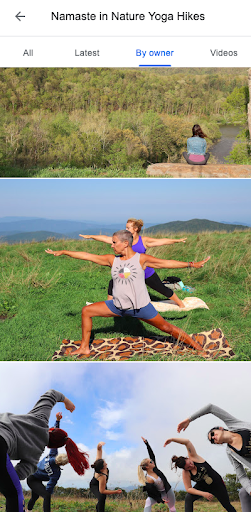
How do I Geotag my images?
- Go to www.geoimgr.com
- Drag the image you want to ‘Geotag’ into the box
- It will tell you if there are any existing Geotags attached to your photo
- If you are using original photo content, it will likely say there are no Geotags attached to your photo
- If this is the case, go to the search bar and type in your business (if your business is brand new it may not come up, so you’ll have to type in your full address)
- Click on your business and it should populate the longitude and latitude of your address
- Fill out the ‘Image Description’: Use key words and the city you want to be found in
- Then click ‘Write EXIX Tags’ - this will add the tags to your photo
- Click ‘Download’ to download your image with the updated tags
- Upload the image to your GMB page
TOP TIP: Do you already ask customers to tag you in photos on Instagram and Facebook? Then why not on your Google account! You can allow other people to upload images to your account. This is great for keeping your feed fresh and reminding Google that your business is active. Just remember to monitor them and take down any that are inaccurate or bad quality.
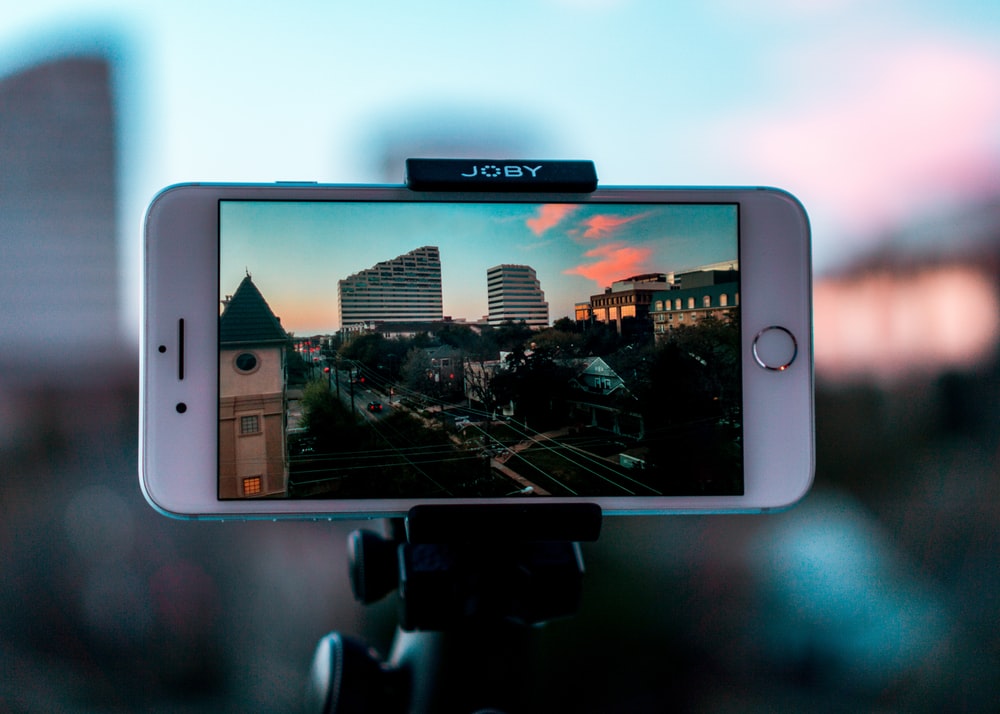
6. Upload original video content to introduce you and your team
Video is a hugely important medium for quick engagement and boosting booking conversions. But there are a few crucial pointers to be aware of:
- Google will remove any stock video or videos where the main subject is not related to the business location. So be sure to create some original content and feature your business location.
- Don’t overcomplicate - even some simple footage of your office and team members can go a long way in boosting customer and Google confidence.
What format should my video take?
- 30 seconds long
- Up to 100 mgb
- 720px or higher
TOP TIP: Include two or more videos - once you have more than one video on your GMB listing you’ll get a videos subtab, which allows your videos to show up on mobile devices.

7. Reply to your Google Reviews
Google prioritizes bigger brands, and having lots of good quality review content is a big signal to Google that your business is popular. Reviews are also great for connecting with new customers and keeping old customers engaged.
Aim to have at least five 5-star reviews as a starting point. The lack of star ratings is a stand-out differentiator and automatically makes you look worse than your competition.
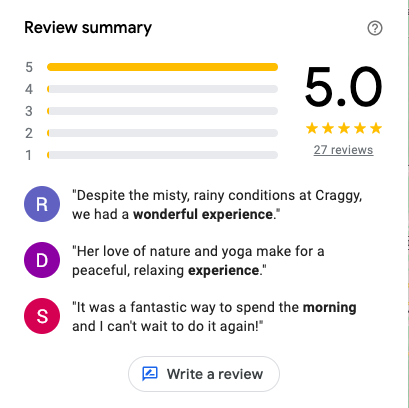
How can I boost my review content on Google?
- Reply to every review. This keeps your customers interested, makes your business look trustworthy, and is a great opportunity to get more keywords onto your GMB page to boost your ranking.
- Address bad reviews by acknowledging the issue mentioned and suggesting a way to make it right. Leave a comment such as: ‘We are so sorry to hear that, please make yourself known to us and we will do what we can to make this right’.
- Use Peek Pro’s Smart Reviews feature to send a customized review request to every one of your customers, and use the Reviews Widget to showcase these reviews on your website and to link them to your GMB account. We have seen these features increase Google reviews for our partners 10-fold in less than 6 months! To find out how, head to this Helpdesk article.


8. Write your own questions in the Q&A section
The Q&A section of your GMB is a great way to boost trust in your brand by showing visitors that you are engaging with customers and providing them with the information they need.
Monitor the questions as closely as your reviews and always leave a response as quickly as possible. Other people are able to reply to these questions, so be sure to check they are providing the correct information.
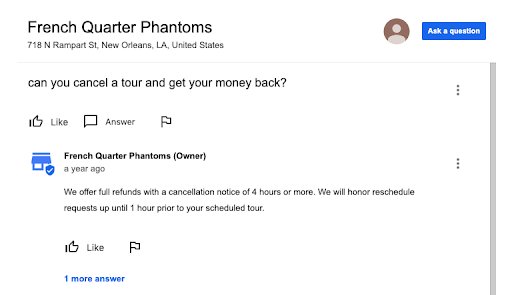
You have the ability to upvote questions and this will make them more visible on your page as they will be listed near the top. If you see some particularly relevant questions, upvote them to highlight them.
TOP TIP: Treat this section like your Frequently Asked Questions (FAQ) page on your website and add your own questions to this section. This is a great way to make sure customers have all the info they need and to show Google you are optimizing your account.

9. Treat your posts like you treat your social media
‘Posts’ are great for grabbing people's attention. Use snazzy pictures and special offers to entice the viewer to read more.
Just like your Instagram or Facebook pages, you should update these regularly to keep driving traffic - ideally every seven days. Every time you post, a positive ranking signal is sent to Google to help list you closer to the top of searches. Why not set a reminder to repost every week?
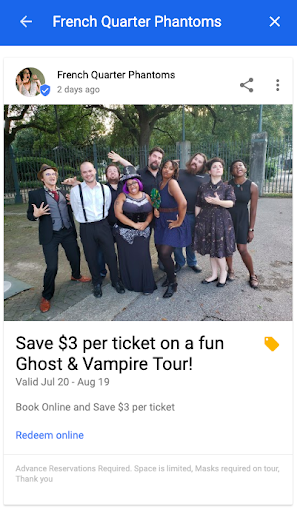
It is important to choose eye-catching images of good quality. The dimensions for the images should be 590 x 495 px.
These posts can work like mini adverts - here are some ideas for how to use them to pull in new customers:
- Appeal to visitors seeing your business for the first time - offer a free glass of Champagne with the first tour you take
- If you are throwing a special event such as a children-only session or live music at your business, create an image with the date and time, and link to the booking widget
- Offering a new tour or activity? Take some awesome pictures of it and link to a testimonial
- Do you have a blog? Post every time you publish a new blog post

10. Link your mobile phone number to your GMB page
Uploading a mobile phone number to the messaging section of your GMB page allows you to respond to customers in real-time. Visitors can send you a direct message that will come through straight to your phone and you can set up notifications to alert you about new questions, reviews or photos on your account.
Instant response to customers is huge for boosting trust in your brand and makes you look brilliant to the customer.
- This doesn’t need to be the number in your NAP and you don’t need to worry about this number being displayed for everyone to see. Google sends the message through to this number so the customer will never actually get hold of it
- To set up alerts for updates to your GMB page, head to settings and tick “Customer Messages”. This will make sure you are on top of any changes that might happen on your GMB page
- You can also customize the message customers receive when they send you a text using this feature. Use this message to let the customer know:
- You have received your message
- You will reply soon
- Thank them for getting in touch
Google has provided this Helpdesk article with a set-by-step guide to getting this set up.
TOP TIP: Once you’ve got this feature set up, make sure it works by giving it a go yourself. Send yourself a message, make sure it comes through and check that you receive a response message.For more relevant updates and information for tour operators, check out our Resource Hub and sign up to receive email updates.
.png)
Growvember 2020
Peek gathered some of the industry’s best and brightest to help you supercharge your business this season! These industry experts delivered invaluable workshops on topics such as Facebook Ads, Google My Business Listings, Dynamic Pricing and SEO to help you drive more revenue for your company.
To check out the recordings of these sessions, fill in the form below:
[hubspot type=form portal=2585423 id=1ff5c631-9fe8-4967-b2b4-92ea30c3fe6c]
.png)
Reboot Your Tour Business via the Local Market
In his recent webinar, Josh Oakes of The Sunshine Tribe shared tons of actionable advice for rebooting your business using your local market - something that more and more operators are considering as international travel remains low.
You can access the recording of the full webinar here.
But if you don't have time to watch the whole session, don’t worry! We’ve summarized the key takeaways below.
So how do you make your experiences interesting for locals?
There can often be pessimism around creating tours for locals, with popular opinion being that locals don’t pay big money and they aren’t interested in what you're selling. But Josh doesn’t believe this to be the case - he’s confident locals will pay if you are solving a problem for them.
Locals may not want to pay for the exact same tour you would sell to someone who’s never stepped foot in your area, but they may well be interested in an experience that has been created with them in mind.
Designing for Locals
With a little creative thinking, you may be able to tweak your existing activities in order to make them stand out in your local area and attract a new audience who are ready and willing to pay to have an awesome experience close to home.
Here are Josh’s 6 steps to creating experiences designed to engage your local community:
- How to find a market segment that needs what you're selling
- Proving your concept via 'deep dive' research
- Ironing out the creases - take your experience for a ride
- Pricing 101 - do's and don'ts when pricing a locally geared experience
- Copywriting best practices - how to get your messaging right
- Marketing - paid ads, local SEO and keywords, online platforms & local collaborations

1. How to find a market segment that needs what you're selling
What potential market segments could you serve? Start by carefully thinking through the types of locals that could be interested in your products.
Some examples could be:
- Over 60s or retired folks who have been denied their yearly international vacation due to the pandemic
- Corporate businesses with Christmas parties and team building sessions to plan
- Families looking for ways to blow off steam after being cooped up inside
- Couples wanting a break from looking after the kids
- Groups looking to celebrate milestones that took place during lockdown
- Bachelor or Bachelorette events
- Local clubs, groups or societies
It’s important to have a good idea of who your audience is so you can start to brainstorm what their interests are, and what problems they have that you could solve.
Top Tip: Facebook is a great resource for this. Join tour operator groups and find out what's been working for other operators focused on the local market, what kind of customers they’re reaching, and what they’re selling. Examples: Tour Operators United or Tourpreneur for Tour Operators/Tour Professionals.
Look at the options, go with your best hunch, and choose one.

2. Proving your concept via 'deep dive' research
Once you have decided on your target market, take the time to really get to know them. Find out what they’re looking for and identify the challenges or frustrations they may have around vacations, travel, and leisure activities.
A couple of ways you can do this:
- Talk to as many of them as possible. Identify people that fit the demographic and reach out to set up calls and meetings.
- Throw all the inquiries you’ve received from local visitors in the past into a spreadsheet and work your way through them to identify patterns.
What to go further with your research? Find out how these groups communicate with each other. Find local Facebook groups related to your chosen demographic, search their feeds for insights and pose questions such as:
- What kind of activity would you enjoy?
- What wouldn’t you enjoy?
- Have you done any local tours that you’ve loved?
Josh chose corporate businesses as his segment and looked into Christmas parties and reward schemes. He drew up a target market list of 100 companies, and spent three months calling them to research what kinds of products they would be interested in.
Talking to these people gave Josh permission to sell to them and get them excited about the product.
Don’t forget! Avoid trying to get the answer you're looking for - approach it like you want to disprove your theories.
Top Tip: Keep a record of the EXACT language your target market used when describing the products they were looking for. Then use these phrases in your marketing and promotion to really grab their attention.

3. Ironing out the creases - take your experience for a ride
Once you’ve gathered all your insights and data, it’s important to spend some time formalizing your offerings and critiquing your ideas.
Get expert opinions from people that matter - other local businesses, tourism representatives, DMOs, product development managers, OTAs, travel agents, or hotel concierges.
- Hold a trial run of your tours and invite the experts to get their feedback
- Be clear on your objective and how you want to get it - “I need your feedback by X date”.
- Make it sound fun and don’t focus too heavily on the research.
- Mention that you may need to follow up with a phone call.
- Let them suggest a good time slot - then if they say no, you know it’s because they aren’t interested.

4. Pricing 101 - do's and don'ts when pricing a locally geared experience
You may have heard the phrase ‘locals won’t pay’. This is NOT true - people will pay if you are solving a problem for them. As long as you’ve created good experiences that specifically appeal to your target market and address their frustrations, they’ll be willing to pay.
- Don’t base your prices on the marketplace - you’re offering something new and the price of your product should be a reflection of its quality and value.
- Get the experience right first, then focus on the price.
- Segment, segment, segment! Targeting your audience in this way should help you get a good idea of what customers are prepared to pay.
- Test your prices - be sure to run them past some focus groups and reflect on the feedback.

5. Copywriting best practices - how to get your messaging right
Base your messaging around your original research about your segments. Identify what they’re looking for in a product and how your product fixes the issues they were having with similar products in the past.
An example from Josh’s research:
- Team-building activities - they wanted staff to feel appreciated and to be excited about attending the experience. They also had specific budget constraints.
The messaging should differ from your previous campaigns because your target audience has changed. For international visitors you are likely to focus more on the destination, timings, and lots of description about the locations. But with corporate business clients, the focus is on convenience, efficiency, and pleasing the boss.
Remember that with a local market, you’re solving different problems - so you need to adjust your messaging accordingly.

6. Marketing - paid ads, SEO and keywords, online platforms & local collaborations
Paid Ads
Now is a great time to run paid ads; many people are spending more time on social media, and most are itching for an accessible new adventure.
- Start with a small daily budget and see what sticks.
- Run your ads for a while on Facebook and Instagram; it takes time for them to learn about your business and who best to show your ads to. 10-14 days is usually a good starting point.
- Facebook is usually the best platform to start off with.
Online Platforms
Optimize your Google My Business account so customers can find out all they need to know at the click of a button. Remember to include clear information, photos, and options to book.
Reviews
Reviews are really important for getting customers to commit to purchasing your product. Ideally you should have at least 15 5-star reviews on your website. Why not reach out to past customers who never left a review to try and boost your numbers?
Local Collaborations
Work with other tour operators! If people are buying one type of activity in the area, chances are that they like new experiences - and may be interested in your product too. At this time, it’s crucial to collaborate.
Top Tip: Check out Chris Torres’s online book - How to Turn your Online Lookers into Bookers. You can download it for free and it has brilliant insights about marketing to locals.
With international travel potentially on hold for the foreseeable future, appealing to local markets is critical to boosting your business. Now is the time to capitalize on the widespread desire of folks to get out of the house and enjoy amazing local experiences in a safe and fun way!
Want more details on the insights shared in this post? Check out the full session: Rebooting your Tour Business via the Local Market.

Who is Josh Oakes?
Josh grew his local tour company to millions of dollars in annual revenue and sold it for $1m+ in June 2017. He has now founded the The Sunshine Tribe, which helps tour and activity operators across the globe build successful businesses and create awesome experiences.
Local Market Recovery Program
In this newly-launched program, Josh shares tons of insights into how to reposition your tours or activities to serve local customers, while international travel remains on hold.
It's an uncomplicated, step-by-step system to get you selling your experiences to totally new customers within a month.







